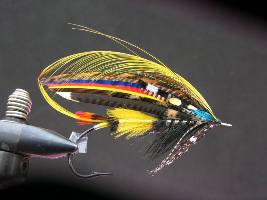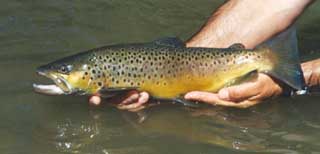By Jim Valle
CI, THCI, MCI, BOG
Fishing is fun, Fly fishing is art! There is an innate beauty in a fly cast. There is a sense of satisfaction and well being that comes from standing in a stream or on the shoreline and rhythmically casting a fly line back and forth. It’s a sense of being in time with nature, in tune with the solitude of the outdoors, part of the whole picture. The fly line moving through the air, floating, unrolling, seemingly weightless, appears to defy the law of gravity. Fly casting has a poetic nature all its own. There is a romance here; it’s with the love of the game.
Most people are familiar with Spin or Bait casting. We cast a lure or weight on the end of the line and like throwing a rock, we hurl the weight and the line follows. In fly casting we attempt to cast an almost weightless fly, made of feathers, hair and thread, to a target and present that fly in a manner that will imitate a natural food source. In Fly Casting the line itself is the weight and the fly is along for the ride.
There are many parts to sport of fly fishing from the aquatic entomology to the presentation. The fly fisherman must know and understand the cycle of nature, the food sources we try to imitate and their life cycle. Of course tying flies is an art form all on its own…  from the very basic and tiny to the elaborate and beautiful, even collectible Salmon Fly. The crafter brings fur and feather together in a very individualized interpretation of nature. This interpretation is to be inspected up close and approved with a strike or rejected at the very last nanosecond, by the quarry. This can skip a heart beat so be careful. The artist is attempting to represent life itself be it, insect or baitfish, through color and shape. Be careful fly tying can be very addictive especially when using your own creation, you take and release a fish back to the wild (for your grandkids to catch again someday).
from the very basic and tiny to the elaborate and beautiful, even collectible Salmon Fly. The crafter brings fur and feather together in a very individualized interpretation of nature. This interpretation is to be inspected up close and approved with a strike or rejected at the very last nanosecond, by the quarry. This can skip a heart beat so be careful. The artist is attempting to represent life itself be it, insect or baitfish, through color and shape. Be careful fly tying can be very addictive especially when using your own creation, you take and release a fish back to the wild (for your grandkids to catch again someday).
 from the very basic and tiny to the elaborate and beautiful, even collectible Salmon Fly. The crafter brings fur and feather together in a very individualized interpretation of nature. This interpretation is to be inspected up close and approved with a strike or rejected at the very last nanosecond, by the quarry. This can skip a heart beat so be careful. The artist is attempting to represent life itself be it, insect or baitfish, through color and shape. Be careful fly tying can be very addictive especially when using your own creation, you take and release a fish back to the wild (for your grandkids to catch again someday).
from the very basic and tiny to the elaborate and beautiful, even collectible Salmon Fly. The crafter brings fur and feather together in a very individualized interpretation of nature. This interpretation is to be inspected up close and approved with a strike or rejected at the very last nanosecond, by the quarry. This can skip a heart beat so be careful. The artist is attempting to represent life itself be it, insect or baitfish, through color and shape. Be careful fly tying can be very addictive especially when using your own creation, you take and release a fish back to the wild (for your grandkids to catch again someday).The equipment fly line, rod and reel are fairly simple in form and function. From natural hand crafted bamboo to space age materials, all with their own characteristics and advantages. Fly fishing equipment has become more specialized and can add real enjoyment whether it be that extremely smooth performance or simply the pride of ownership of a finely crafted instrument.
Casting of course as I said above has its own rewards not only in the artistic but also the practical. Understanding the concept of the mechanics is the first and essential step in mastering the art of fly casting. The laws of physics and their application to a flexible lever (rod) being moved through a casting stroke to a point that aims the line precisely at the target, landing exactly as intended is challenging and exciting. I have spent more than 35 years learning and yet there is always more to learn. Every step of the way has been enjoyable just pure fun and accomplishment. It’s not hard anyone can do it. It just takes a little practice. The only difference between a good fly caster and a Master is practice!
There is an old argument among fly fishermen as to which is more important knowing where the fish are or being able to present the fly to them. Knowing where the fish are, is certainly nice however if you can’t reach them or present the fly you are simply not in the game. Even if you have no idea where the fish are but can cast well enough to cover the water with finesse you are likely to find success.
The instruction and courses I offer range from the fundamentals which demonstrate “The Art of Casting and Presenting an Artificial Fly Accurately and Delicately” to a target to the more advanced presentation and distance casts in fresh or salt water… then on into Two Handed Spey and then combining it all to make spey casts with a single hand rod … which adds a completely new dimension to a casters presentation skills…You will put a fly exactly where you want it and exactly how.
Fly fishing has many aspects and anyone can spend an entire lifetime enjoying the sport. It is a sport that stays with you at any age!
“Fly Fishing is not Life and Death…
It’s much more important than that!”
—Unknown

